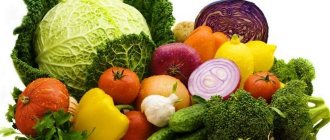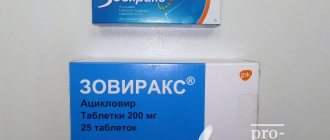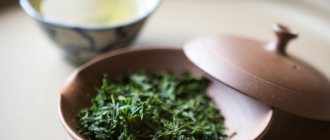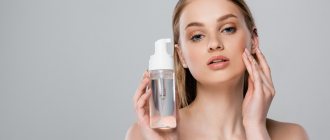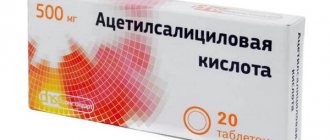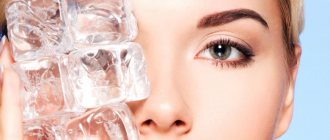The text is for informational purposes only. We strongly urge you not to use diets, resort to any therapeutic menus or fasting without medical supervision. We recommend reading: “Why you can’t go on a diet on your own.”
Pimples (skin rashes, acne, acne) are a cosmetic problem that is traditionally considered typical for teenagers, but skin rashes often bother adults. Most representatives of the fair sex, having noticed uninvited “guests,” often make the same traditional mistake: they cover up acne lesions with decorative cosmetics. This is only a momentary solution that will not remove the problem itself, but simply masks its manifestations. In order to choose the best method for getting rid of acne, you should contact a cosmetologist and reconsider your diet. The specialist will first ask you about what you eat when you come to see him.
A proper diet is one of the important components in the fight for healthy and beautiful skin. Only an integrated approach, combining external remedies and the right diet, can rid you of skin rashes once and for all. Any inflammatory processes, the appearance of acne or acne indicate that it’s time to choose a diet for acne.
Causes of acne
Content:
- Causes of acne
- Basic principles of an acne diet
- Recommended Products
- "Black list" of products
- Acne diet - sample menu
The causes of any skin rash vary. The issue may be hormonal instability, diseases of some internal organs and other disorders in the body. However, most often, acne signals that there are certain errors in the diet that need to be eliminated.
For example, nutritionists have long found out that excess sugar leads to intense insulin production, which, in turn, provokes an increase in the level of male androgen hormones. As a result, the production of sebum increases, which clogs the pores. This is the first step towards acne.
In addition, experts have long established a connection between skin condition and intestinal condition. The diet of a modern person is far from ideal, and therefore it often becomes the cause of disturbances in the functioning of the gastrointestinal tract. As a result, waste and toxins accumulate in the body, and metabolic processes slow down. The intestines cease to perform their direct function; they simply cannot cope with the removal of toxic substances that are absorbed and begin to destroy the body from the inside. The skin is involved in the cleansing function, “dumping” toxins through the pores. As a result, irritation, pimples, the notorious “blackheads” and acne occur.
Therefore, cleansing the intestines and normalizing the gastrointestinal tract are the first step towards getting rid of skin problems.
The importance of proper nutrition when treating acne
Most often, the problem is genetic and inherited, but even in this case, if you follow the recommendations of specialists, the intensity of the rash can be controlled by maintaining healthy skin.
Dermatologists and cosmetologists, in addition to individual instructions for the treatment of acne, recommend that patients adhere to a low-carbohydrate diet and pay attention to products that will help reduce the amount of sebum production and reduce its density, preventing the formation of new foci of inflammation. It is also worth paying attention to the list of products whose consumption is recommended to be reduced, as they have a negative effect on the condition of the skin.
Basic principles of an acne diet
The peculiarity of a diet designed to solve the problem of acne and pimples is that specialists can only provide general recommendations. Each organism is individual, and therefore it is necessary to compile a diet gradually, taking into account all the characteristics, lifestyle and possible intolerance to certain products. Rapid and sudden changes in diet can have a negative impact on well-being
The first step in the fight for healthy skin, as noted above, should be the normalization of intestinal function. In order to get rid of dysbiosis, you should include soluble dietary fiber and pectin in your diet, which help create a favorable environment for the proliferation of beneficial microflora.
Buckwheat and pearl barley, whole grain pasta, brown rice, wheat bran, broccoli and Brussels sprouts, dill, spinach, etc. are rich in natural dietary fiber.
What kind of processing the food undergoes is of great importance. For those who have skin problems, nutritionists recommend minimizing the presence of fried foods in their diet. Use a double boiler or a slow cooker - they will not only help you cook with a minimum amount of fat, but also preserve the maximum amount of vitamins and minerals in foods.
For problem skin, it is recommended to include foods high in zinc in your diet every day. We are talking about wheat bran, liver, lean beef and seafood. Zinc is a trace element that has a positive effect on the functioning of the sebaceous glands and normalizes their functions.
Vitamins are also responsible for skin condition. Thus, vitamin A, due to its outstanding anti-inflammatory properties, promotes wound healing, removes redness and peeling, and evens out skin texture. The highest concentration of this substance is in fish oil, carrots, corn, apricots, and dairy products.
B vitamins should also be present in the diet. They stimulate epidermal cell renewal, metabolic processes and are responsible for cell regeneration. You can find these vitamins in cheese, cabbage, wheat groats, buckwheat, liver and kidneys.
Vitamin E is not called the “vitamin of youth” for nothing. It effectively stimulates cell regeneration processes, has a lifting effect, maintains water-lipid balance in the body, helping to solve the problem of dry skin, peeling, and age spots. This miraculous vitamin is present in sunflower, cottonseed and soybean oil, sprouted wheat, green peas, boiled eggs, and parsley.
Finally, for any skin problems, fish must be present in the diet. It is rich in omega-3 fatty acids, the role of which in skin condition is difficult to overestimate. These substances have powerful anti-inflammatory properties, stopping even chronic processes. They speed up the healing process, are responsible for skin elasticity, and tone it.
When can I expect results?
If the diet for problem skin is followed correctly, then within a few days improvements will be noticeable. No, acne will not go away. But new rashes will stop. Gradually, existing pimples will fade and the oiliness of the skin will decrease. A pleasant side effect is that your complexion will improve.
It is recommended to combine nutrition with proper external care and the use of medications. Sometimes acid peels and dermatological cosmetics are used. When the acne is completely gone, you can switch to products for age spots and post-acne. But don’t give up the diet. It should become a way of life.
Recommended Products
The list of products recommended for people with problem skin is quite wide. Nutritionists advise regulating their presence in the diet, focusing solely on your own well-being and possible intolerance:
- Fresh vegetables and fruits. They are rich in fiber, which is responsible for normalizing intestinal function. Nutritionists recommend holding vegetable or fruit fasting days at least once a month.
- Porridge should be consumed at least three times a week. Opt for buckwheat, oatmeal, and brown rice.
- Bread is allowed in limited quantities. It is better to choose coarsely ground rye.
- Fermented milk products should also be on the menu. Choose not too fatty cottage cheese, do not forget about kefir.
- Lean meats - beef, turkey, skinless chicken. Meat should be present in the diet at least twice a week. Steam or grill it.
- Olive oil is a natural, healthy source of a whole range of beneficial substances. Add it to vegetable salads.
- Clean water, mineral water without gas. Proper drinking regimen (at least eight glasses daily) promotes cell regeneration and overall rejuvenation of the body.
- Green tea is a source of the anti-inflammatory chemical catechin. It is better not to add sugar to it.
- Nuts are a storehouse of selenium and omega-3 fatty acids. Of course, you should choose nuts in their “natural” form, without chemical flavoring additives.
Vitamins for beautiful skin
In order for the skin to remain beautiful and acne-free, it should receive the following set of vitamins:
- Vitamin A.
It allows you to retain moisture in the dermis, promotes the normal maintenance of collagen and elastin in its layers, and can also combat the excessive work of the sebaceous glands. Thus, the skin remains elastic for a long time.
- Vitamin E.
This vitamin is a powerful antioxidant that neutralizes the effects of toxins and other harmful substances. If the body receives it in sufficient quantities, then black spots will not form on the skin.
- B vitamins.
Vitamins of this group allow you to deliver other nutrients to the skin and promote their high-quality absorption. However, if there are too many of these vitamins in the body, this will lead to worsening inflammatory processes, which means there will be even more acne.
- Vitamin C. This vitamin is the main fighter against acne. It allows you to destroy toxins and helps reduce inflammation. Moreover, getting through the bloodstream to the pores, ascorbic acid acts as a powerful antiseptic that cleanses the dermis from the inside. Vitamin C also stimulates the immune system, increasing the skin’s ability to resist negative environmental factors.
In addition to vitamins, the skin needs zinc, chromium, selenium, manganese, copper, iron and polyunsaturated fatty acids.
"Black list" of products
Some foods present in our diet should be excluded if any skin problems occur. If you are not able to completely give them up, then at least reduce your consumption of all of the following to a minimum.
So, the “black list”:
- Any smoked meats, even home-cooked ones, fast food, semi-finished products.
- Seasonings. Those who like to treat themselves to spicy foods can add garlic to their dishes - it has an anti-inflammatory effect and helps cleanse the blood. The taste of the salad will help to reveal the ginger root, which has the same properties.
- Fatty meats and fish must be replaced with lean ones.
- Strong black tea, coffee.
- Baking, white bread.
- Sweets: sugar, confectionery, chocolate. Very sweet fruits are also prohibited: bananas, figs, grapes. For those who are unable to completely give up their favorite “snacks,” nutritionists recommend replacing sugar with honey.
- Products high in iodine: seaweed, iodized salt.
It is believed that excess of this substance in the diet can trigger acne.
Reviews and results
A therapeutic diet for acne, according to most patients, makes a significant contribution to the condition of the skin. In principle, this diet is based on the principles of healthy eating and can be prescribed for a long period. True, some patients are bothered by a sharp restriction in the diet of simple carbohydrates.
- “...I have always had problem skin. Acne appeared at the age of 13, but after a few years everything returned to normal. The problem arose again at almost 32 years old. I tried various means, the effect was minimal. I had to consult a dermatologist, who prescribed me systematic treatment, ranging from medications to skin care tips and special cosmetics. Of course, I had to go on a strict diet. At first I suffered greatly from the lack of “sweets,” but gradually I got used to dried fruits and various nuts and now I hardly feel any discomfort. In principle, this is a healthy diet. In addition, after switching to such a diet, I managed to lose almost 5 kg. Now the skin condition has returned to normal, and there are practically no rashes, but I still stick to the diet, since I will have to start the treatment again”;
- “... As my experience shows, proper nutrition and skin condition are closely interrelated. As soon as I start to get carried away with sweets, especially during the holidays, my skin immediately suffers. I immediately go on a diet, give up sweets, unhealthy foods, fatty meats, and after 2-3 weeks my skin condition improves.”
What Causes Acne
To understand why acne occurs on the skin, we need to learn more about the skin itself. The surface of the skin is covered with small openings (pores) that connect to sebaceous glands, which produce an oily fluid called sebum. Your sebaceous glands produce sebum, which is subsequently released to the surface of the skin through a thin channel called a follicle.
Entering the surface of the skin through the follicle, sebum removes dead skin cells from the pores. Pimples and acne are caused by clogged skin pores with dead skin cells, excess sebum, and sometimes bacteria. During puberty, hormones often cause excessive sebum production, which increases the risk of acne.
There are three main types of acne:
- Whiteheads are small pustules protruding from the surface of the skin that occur when pores become clogged.
- Blackheads (comedones) are enlarged, clogged pores that are characterized by tiny dark spots on the surface.
- Acne – Pores are open, allowing sebum, bacteria and dead skin cells to get trapped under the skin. They appear as red bumps that sometimes have a white top filled with pus (the body's response to bacteria).
How does your diet affect your skin?
Your daily diet can negatively affect your skin. Some foods raise your blood sugar faster than others. When blood sugar levels rise quickly, it causes the body to produce the hormone insulin, which in excess can cause your sebaceous glands to overproduce sebum, increasing the risk of pimples and acne.
Some foods that cause insulin spikes include:
- pasta
- White rice
- White bread
- sugar
These foods contain high-glycemic carbohydrates, which stimulate insulin production. This means they are made from simple sugars. According to a study published in the Journal of Clinical and Aesthetic Dermatology, chocolate also makes acne worse, but it doesn't seem to affect everyone the same.
Other researchers have studied the connection between the so-called "Western diet" or "standard American diet" and acne. This diet is based largely on:
- high glycemic carbohydrates
- dairy products
- saturated fat
- trans fats
According to a study published in the Journal of Clinical, Cosmetic and Investigational Dermatology, these types of products stimulate the production of hormones that can cause excess sebum production. They also found that a Western diet is associated with more inflammation, which can also contribute to the development of skin problems such as pimples and acne.
The standard American diet is becoming increasingly popular in the CIS countries and contributes to the worsening of acne skin conditions
What Products Can Help Your Skin?
An acne clearing diet involves eating low glycemic index foods consisting of complex carbohydrates, which can reduce the risk of pimples and breakouts on the skin. Complex carbohydrates are found in the following foods:
- whole grain
- legumes
- fresh fruits and vegetables
Foods containing the following ingredients are also considered good for the skin because they reduce inflammation:
- zinc
- vitamins A and E
- antioxidants
A diet to improve facial skin should also include the following foods:
- yellow and orange fruits and vegetables such as carrots, apricots and sweet potatoes
- spinach and other dark green and leafy vegetables
- tomatoes
- blueberry
- whole wheat bread
- brown rice
- quinoa
- turkey
- pumpkin seeds
- beans, peas and lentils
- mackerel, herring, anchovies, salmon, mackerel and other types of fatty fish
- nuts
Everyone's body is different, and some people may notice that their skin gets worse when they eat certain foods. Sometimes it can be very helpful to experiment with your acne diet under your doctor's supervision to see what works best for you. When planning your diet, always take into account any food allergies or sensitivities you may experience.
What is acne
Acne is a skin condition that can cause breakouts and inflammation on the skin's surface, such as acne and pimples. They can form on any part of the body, but are most often found on:
- face
- neck
- back
- shoulders
The occurrence of acne and pimples is often associated with hormonal changes in the body, which most often occur in older children and adolescents during puberty.
Acne goes away without treatment, but quite slowly, but sometimes, when the acne begins to go away, new outbreaks may appear in other places on the skin. Severe cases of acne are rarely dangerous, but can cause emotional stress and scarring of the skin. Depending on the severity of the skin condition, you may take no action to treat your condition, you may use special treatments in the form of creams, lotions, soaps or gels, you may use a diet to clear your acne, or you may resort to the use of serious medications.
